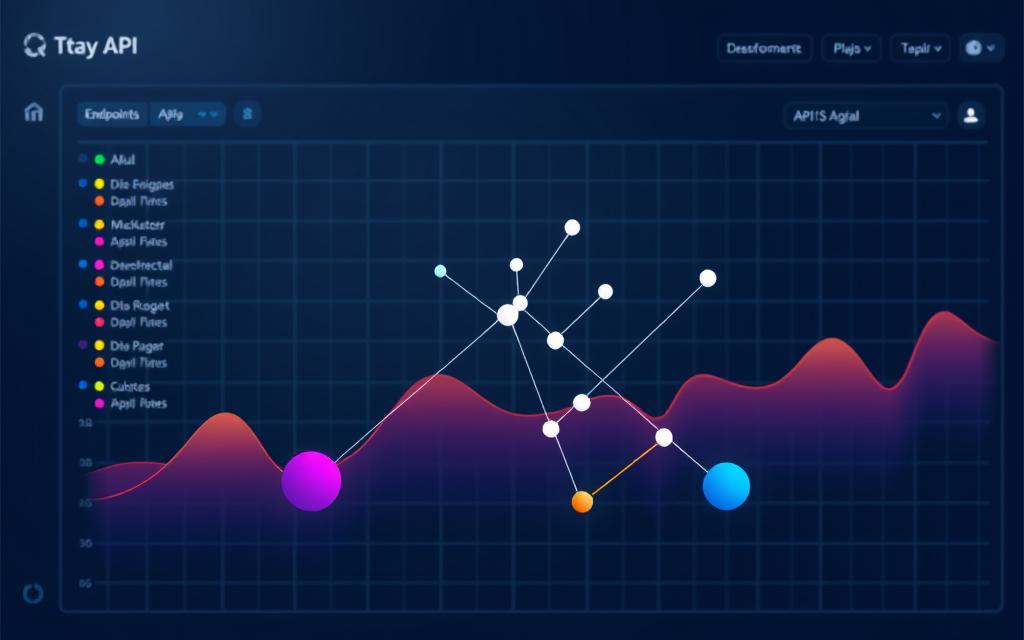Table of Contents
The cryptocurrency market continues expanding, with over 22,000 digital assets now available. While competition grows, opportunities remain for innovative projects with clear utility. Developing new blockchain solutions requires technical expertise but offers rewarding possibilities.
Three main approaches exist for launching digital currencies: building from scratch, modifying existing code, or using established platforms. Projects like Dogecoin demonstrate how diverse use cases can succeed in this space.
Successful cryptocurrency development demands careful planning. Legal compliance, technical infrastructure, and clear purpose form the foundation. Costs vary significantly, ranging from $5,000 to $50,000+ depending on complexity.
This guide explores a 12-step roadmap for bringing digital currency concepts to life. We’ll examine market trends, development methods, and real-world examples to help you navigate this evolving landscape.
Understanding Cryptocurrency Fundamentals
Digital currencies operate on groundbreaking principles that redefine value exchange. At their core, they combine cryptography, decentralization, and distributed ledger technology to enable secure peer-to-peer transactions without intermediaries.
The Mechanics Behind Digital Currencies
Every transaction gets recorded on an immutable public ledger called a blockchain. Bitcoin’s Proof of Work system requires miners to solve complex puzzles, while Ethereum’s account-based model tracks balances like traditional banking.
Key components power these systems:
- Nodes: Network participants that validate transactions
- Wallets: Digital interfaces storing cryptographic keys
- Merkle Trees: Data structures ensuring transaction integrity
“Blockchain represents the second generation of internet technology – the internet of value.”
Diverse Digital Asset Categories
Not all cryptocurrencies serve the same purpose. Major types include:
| Type | Example | Primary Function |
|---|---|---|
| Payment | Bitcoin (BTC) | Digital cash alternative |
| Platform | Ethereum (ETH) | Smart contract execution |
| Utility | Basic Attention Token (BAT) | Specific ecosystem services |
| Stablecoin | Tether (USDT) | Price-stable transactions |
Blockchain Architecture Essentials
This revolutionary technology comes in different forms. Public blockchains like Bitcoin allow anyone to participate, while private versions restrict access to authorized entities.
Performance varies dramatically across networks:
- Bitcoin: 7 transactions per second
- Ethereum: 15-30 transactions per second
- Solana: 65,000+ transactions per second
Security remains paramount, with measures like cryptographic hashing and consensus protocols protecting against 51% attacks. Modern solutions like Cardano’s layered architecture demonstrate continuous innovation in this space.
Planning Your Cryptocurrency Project
Strategic vision separates temporary tokens from enduring digital assets in the competitive crypto space. Comprehensive planning covers three critical areas: purpose definition, audience identification, and economic modeling. These elements form the blueprint for any successful attempt to create cryptocurrency solutions.

Defining Your Coin’s Purpose
Successful projects solve specific problems rather than chasing trends. The IMPT token demonstrates this perfectly by rewarding carbon footprint reduction through blockchain technology.
Ask these key questions when shaping your project’s purpose:
- Market gap: What existing problem does this solve? (Use CoinMarketCap for analysis)
- Unique value: How does this improve upon current solutions?
- Sustainability: Can this purpose maintain long-term relevance?
Identifying Target Users
Ripple’s focus on cross-border payments shows the power of well-defined audiences. Different user groups require tailored features and engagement strategies.
Develop detailed personas for:
- Retail investors (community-driven projects)
- Institutional partners (enterprise solutions)
- End-users (utility token applications)
“A currency only has value if people believe in its underlying purpose and continued existence.”
Creating a Tokenomics Model
Your economic design determines long-term viability. Balance these critical features:
- Supply controls: Burning mechanisms combat inflation
- Distribution: Vesting schedules (3-5 years for team tokens)
- Governance: DAO structures vs centralized control
Additional considerations include mining rewards, transaction fees, and anti-whale mechanisms. Projects planning multi-chain interoperability from inception gain significant advantages.
When you create cryptocurrency projects with this level of planning, you establish foundations for sustainable growth. The most successful digital assets combine clear purpose, defined users, and balanced economics.
Choosing Your Development Approach
Blockchain development offers multiple pathways for launching digital assets, each with distinct advantages. The right method balances technical requirements, budget, and project goals. Below, we explore three proven strategies.
Building a New Blockchain
Developing from scratch provides full control over features and consensus mechanisms. This approach suits projects needing unique architectures, like Hedera Hashgraph’s directed acyclic graph (DAG).
Key considerations include:
- Hardware: Independent nodes require 16GB+ RAM and enterprise-grade SSDs.
- Frameworks: Cosmos SDK simplifies modular development, while Substrate offers Polkadot compatibility.
- Audits: Firms like CertiK charge $15,000+ for comprehensive security reviews.
Forking an Existing Blockchain
Modifying an existing blockchain accelerates development. Litecoin famously forked Bitcoin’s code, adjusting block times and hashing algorithms.
Successful forks share these traits:
- Clear improvements (e.g., Polygon’s scalability upgrades over Matic).
- Community support for network adoption.
- Backward compatibility with parent chain tools.
“Forking isn’t copying—it’s standing on the shoulders of giants to reach further.”
Creating Tokens on Established Platforms
Ethereum hosts 400,000+ ERC-20 tokens, proving this method’s efficiency. Binance Smart Chain (BSC) rivals it with 3-second block times and lower fees.
Compare popular blockchain platforms:
| Platform | Token Standard | Gas Fees | Best For |
|---|---|---|---|
| Ethereum | ERC-20 | High ($10–$100) | DeFi, NFTs |
| BSC | BEP-20 | Low ($0.01–$0.10) | High-frequency trades |
| Solana | SPL | Negligible ($0.001) | Scalable dApps |
Layer-2 solutions like Arbitrum optimize Ethereum’s scalability, while Hyperledger Fabric serves enterprise needs with permissioned networks.
How to Create a Crypto: Technical Implementation
Behind every successful blockchain lies a carefully engineered infrastructure. This phase transforms whitepaper concepts into functional networks, demanding precision in three core areas.

Selecting a Consensus Mechanism
The consensus mechanism dictates how nodes validate transactions. Choices impact security, scalability, and energy use:
| Type | Example | Energy Use | Hardware Costs |
|---|---|---|---|
| Proof of Work (PoW) | Bitcoin | High (≈91 TWh/year) | $2K–$15K ASIC miners |
| Proof of Stake (PoS) | Ethereum 2.0 | Low (≈0.01 TWh/year) | Minimal (staking wallets) |
| Pure PoS (PPoS) | Algorand | Negligible | None (random selection) |
“Consensus algorithms aren’t just technical choices—they’re economic and philosophical statements.”
Setting Up Network Nodes
Nodes form the backbone of decentralization. Optimize their placement and configuration:
- Geographic distribution: Prevent outages by hosting nodes across AWS, Google Cloud, and private servers.
- Hardware specs: 16GB RAM, 500GB SSD minimum for full nodes.
- Security protocols: Implement DDoS protection and firewalls.
Configuring Blockchain Architecture
Tailor parameters to your project’s needs:
- Block size: Bitcoin’s 1MB limits throughput; Bitcoin Cash uses 32MB for scalability.
- Sharding: Split databases like Ethereum 2.0 to boost TPS.
- Disaster recovery: Automate backups for node failures.
Peer discovery mechanisms and mempool sorting further refine network efficiency. These technical choices define your blockchain’s performance and resilience.
Developing Core Blockchain Components
Transaction processing forms the heartbeat of blockchain networks. These systems require precise development of three critical elements: validation protocols, protective measures, and access tools. Each component must work seamlessly to maintain network integrity.

Building the Transaction Protocol
Effective transactions rely on sophisticated management systems. The UTXO model, used by Bitcoin, tracks unspent outputs like digital cash registers. Alternative account-based systems resemble traditional banking ledgers.
Advanced protocols incorporate:
- Atomic swaps for cross-chain trades
- Dynamic fee algorithms based on network congestion
- Hierarchical deterministic wallets for simplified key management
Implementing Security Features
Enterprise-grade security demands multiple protection layers. Hardware Security Modules (HSMs) safeguard cryptographic operations at the hardware level. Multi-signature setups requiring 2/3 approvals prevent single-point failures.
Modern solutions include:
- Zero-knowledge proofs for private verification
- Biometric authentication via fingerprint/FaceID
- Cold storage options for institutional holdings
“Security isn’t a feature—it’s the foundation upon which trust gets built in decentralized systems.”
Creating Wallet Interfaces
User-friendly access points drive adoption. The Ledger Nano X demonstrates this principle, supporting 1,800+ assets through intuitive interfaces. Effective wallet development balances accessibility with robust protection.
Key functionalities include:
- Watch-only modes for monitoring addresses
- Hardware wallet integration (Trezor/Ledger)
- Transaction history with smart labeling
Smart Contract Development
Smart contracts revolutionize digital agreements by executing terms automatically when conditions are met. These self-operating programs form the backbone of decentralized applications, enabling trustless transactions across finance, logistics, and governance systems. Proper development requires meticulous attention to security and functionality at each stage.
Writing and Testing Contract Code
Secure smart contract development begins with battle-tested frameworks. OpenZeppelin’s library provides audited templates for common functions like token creation and access control, reducing vulnerabilities in the code base.
Essential testing practices include:
- Property-based testing with tools like Echidna to simulate edge cases
- Reentrancy attack prevention through checks-effects-interactions patterns
- Circuit breakers for emergency pausing of contract functions
“One line of flawed code can drain millions—the DAO hack taught us smart contracts require mathematical certainty, not just functional correctness.”
Deploying to Blockchain
The deployment process transforms tested code into live blockchain operations. Truffle Suite simplifies this with migration scripts that handle:
- Network-specific configuration management
- Gas optimization for cost-efficient deployment
- Verification against multiple testnets before mainnet launch
Upgradeable proxy patterns allow for future improvements while maintaining contract state—a critical feature for evolving projects.
Conducting Security Audits
Comprehensive audits examine every aspect of smart contract functionality. Leading firms employ:
| Method | Coverage | Cost Range |
|---|---|---|
| Manual Review | Line-by-line analysis | $5,000–$20,000 |
| Formal Verification | Mathematical proof of correctness | $15,000–$50,000 |
| Fuzz Testing | Random input validation | $3,000–$10,000 |
Supplement audits with bug bounty programs on platforms like Immunefi, where white-hat hackers can report vulnerabilities for rewards. Document all contract functionality thoroughly to assist both auditors and future developers.
Establishing API Connections
Seamless API integration bridges blockchain networks with real-world financial systems. These digital pipelines enable cryptocurrency platforms to interact with payment processors, exchanges, and reporting tools. Over $139B flows quarterly through Coinbase Commerce API alone, demonstrating the critical role of connectivity solutions.

Payment Gateway Integration
Merchant services require robust payment processing capabilities. BitPay’s solution supports Bitcoin, Ethereum, and stablecoins with 1% transaction fees. Key integration steps include:
- Implementing OAuth 2.0 authentication for secure access
- Configuring webhook notifications for instant payment alerts
- Connecting KYC providers like Onfido for compliance
Chainlink’s price oracle services ensure accurate fiat conversions during settlements. Multi-currency wallets benefit from these integrations, serving global users effectively.
Exchange Connectivity
Trading platforms demand real-time data synchronization. The CoinGecko API delivers market prices, while WebSocket protocols enable millisecond updates. Consider these technical requirements:
| Connection Type | Latency | Rate Limit | Use Case |
|---|---|---|---|
| REST API | 500-1000ms | 10 requests/second | Historical data |
| WebSocket | 50-100ms | Unlimited streams | Live order books |
| FIX Protocol | 20-50ms | 100 messages/second | Algorithmic trading |
“API design determines scalability – poorly structured endpoints become bottlenecks during market volatility.”
Data Reporting Systems
Comprehensive analytics require multiple data sources. Solutions like CoinTracker automate tax calculations across 300+ exchanges. Essential components include:
- New Relic monitoring for API performance metrics
- SDKs for Python, JavaScript, and Java integration
- Custom dashboards displaying liquidity metrics
These reporting tools help platforms maintain transparency while serving institutional users. Proper implementation reduces accounting overhead by 70% according to Deloitte research.
Modern blockchain platforms thrive when API ecosystems function seamlessly. From payment processing to regulatory compliance, these connections form the backbone of user-friendly solutions. Prioritize reliability testing before production deployment to ensure uninterrupted service.
Designing User Interfaces
User experience design determines whether digital assets gain traction or fade into obscurity. Effective interfaces transform complex blockchain operations into intuitive workflows. Over 30 million monthly active users on MetaMask prove the value of thoughtful design.
Wallet Application Development
Digital wallets serve as primary gateways to blockchain networks. Successful implementations combine security with convenience through these features:
- Biometric authentication for quick access
- Custom gas fee controls for transaction optimization
- Portfolio tracking across multiple chains
Advanced options include ENS domain integration and multi-signature approval workflows. These tools work together to create seamless asset management experiences.
Block Explorer Creation
Blockchain.com’s explorer handles 1M+ daily queries by presenting complex data clearly. Essential components include:
- Address bookmarking for frequent checks
- Transaction labeling systems for organization
- Real-time network statistics dashboards
“Explorers turn opaque blockchain data into actionable intelligence – they’re the Google Search of Web3.”
Administrative Dashboard
Backend interfaces empower teams to monitor network health. Robust dashboards typically include:
| Component | Function | User Role |
|---|---|---|
| Node Monitoring | Uptime tracking | DevOps |
| Token Analytics | Supply metrics | Finance |
| Access Controls | Permission management | Administrators |
Dark/light mode toggles and role-based permissions ensure these tools work efficiently for all team members. The right interface features boost productivity while maintaining security.
Navigating Legal Requirements
Jurisdictional requirements vary dramatically for digital asset operations. Financial regulators globally have established distinct frameworks governing blockchain projects. Understanding these laws prevents costly penalties and ensures long-term viability.
Regulatory Compliance Frameworks
The U.S. requires Money Services Business (MSB) registration with FinCEN for wallet providers and exchanges. New York’s BitLicense imposes additional capital and reporting mandates. Europe’s Markets in Crypto-Assets (MiCA) regulations will standardize rules across 27 nations by 2024.
Key compliance steps include:
- Registering entities in crypto-friendly jurisdictions like Switzerland or Singapore
- Implementing OFAC sanctions screening for all transactions
- Developing geofencing to block restricted regions
AML/KYC Implementation
Anti-money laundering security measures protect against illicit activities. The FATF Travel Rule mandates sharing sender/receiver data for transfers exceeding $3,000.
Effective systems incorporate:
- Chainalysis Reactor for transaction monitoring
- Document verification via Jumio or Onfido
- Risk scoring algorithms for suspicious activity
“Compliance isn’t optional—it’s the price of admission to legitimate financial systems.”
Taxation Considerations
Cryptocurrency taxation laws continue evolving. The IRS treats digital assets as property, requiring detailed capital gains reporting.
| Form | Purpose | Threshold |
|---|---|---|
| Form 8949 | Capital gains/losses | All transactions |
| 1099-MISC | Mining/staking income | $600+ annually |
| FBAR | Foreign account reporting | $10,000+ aggregate |
Most jurisdictions require FIFO (First-In-First-Out) accounting methods. Projects should integrate tax calculation tools like CoinTracker during wallet development.
Launching and Marketing Your Cryptocurrency
Effective marketing transforms blockchain concepts into valuable ecosystems with engaged users. A well-executed launch combines community building, strategic funding, and exchange visibility. Projects like Ethereum’s $18M ICO demonstrate the success potential of this phased approach.
Pre-Launch Community Building
Early adopters fuel organic growth. Polkastarter’s launchpad model shows how incentivized participation drives engagement. Key tactics include:
- Bounty programs rewarding social media promotion (e.g., CoinMarketCap campaigns)
- Reddit AMAs with developers to build trust
- Liquidity mining pools locking $50M+ in assets
Discord and Telegram groups should maintain 24/7 moderation. Projects with 10,000+ community members before launch see 3x higher retention rates.
ICO/IDO Execution
Token sales require meticulous planning. Vesting schedules prevent dumping—typically 20% at launch, then monthly unlocks. Compare popular models:
| Model | Average Raise | Platform | Investor Requirements |
|---|---|---|---|
| ICO | $5M–$50M | Self-hosted | Open participation |
| IDO | $1M–$10M | Polkastarter | Whitelist/KYC |
“Presale hype means nothing without utility—investors scrutinize whitepapers harder than ever.”
Exchange Listings Strategy
Tier-1 platforms like Binance demand proof of traction. Coinbase’s $1M+ fees justify targeting mid-tier exchanges first. Essential steps:
- Secure market makers for liquidity (minimum $500K/day volume)
- Partner with influencers like BitBoy Crypto for visibility
- Track market depth using Nansen analytics
PPC campaigns via CoinTraffic can boost trading volume by 40% pre-listing. Prioritize exchanges matching your project’s niche (e.g., Uniswap for DeFi tokens).
Conclusion
Building sustainable blockchain projects requires long-term vision and adaptability. The cryptocurrency development process spans technical implementation, legal compliance, and community building.
Continuous iteration separates thriving projects from abandoned ones. Emerging trends like zero-knowledge proofs and layer-2 solutions demand ongoing attention. Security updates remain non-negotiable in this evolving space.
Active community engagement fuels network effects. Developer grants and hard fork possibilities enable future upgrades. Regulatory landscapes will keep shifting as adoption grows.
The blockchain ecosystem rewards those who combine innovation with persistence. Whether launching new cryptocurrency solutions or improving existing ones, the journey begins with committed first steps.
FAQ
What are the key components needed to develop a cryptocurrency?
Essential components include a consensus mechanism, blockchain architecture, wallet interfaces, and security protocols. A well-defined tokenomics model and regulatory compliance also play crucial roles.
Can I build a cryptocurrency without coding knowledge?
While possible using platforms like Ethereum or Binance Smart Chain, technical expertise ensures better customization and security. Hiring blockchain developers is recommended for complex projects.
What’s the difference between a coin and a token?
Coins operate on their own blockchain (e.g., Bitcoin), while tokens run on existing networks (e.g., ERC-20 tokens). Tokens are easier to develop but depend on the host blockchain’s rules.
How do consensus mechanisms impact cryptocurrency performance?
Mechanisms like Proof of Work (PoW) or Proof of Stake (PoS) determine transaction speed, energy efficiency, and decentralization. PoS is faster and eco-friendly, while PoW offers robust security.
What legal steps are required before launching a cryptocurrency?
Compliance includes registering as a legal entity, adhering to AML/KYC laws, and understanding tax obligations. Regulations vary by country, so consult legal experts in your target markets.
How long does it take to develop and launch a cryptocurrency?
Simple tokens take weeks, while custom blockchains may require months. Factors like testing, audits, and community building influence the timeline.
What’s the cost range for creating a cryptocurrency?
Costs vary from ,000 for basic tokens to 0,000+ for full-scale blockchains. Expenses cover development, audits, marketing, and legal compliance.
Why is smart contract auditing critical?
Audits identify vulnerabilities in contract code, preventing exploits like reentrancy attacks. Firms like Certik or Quantstamp provide thorough security assessments.
How do I ensure my cryptocurrency gains market traction?
Focus on solving real-world problems, build an engaged community, and secure listings on reputable exchanges like Coinbase or Binance. Transparency and utility drive adoption.
Can I modify my cryptocurrency’s rules after launch?
Changes require hard forks or governance votes, which can split the community. Plan tokenomics and blockchain rules carefully to avoid future disruptions.









